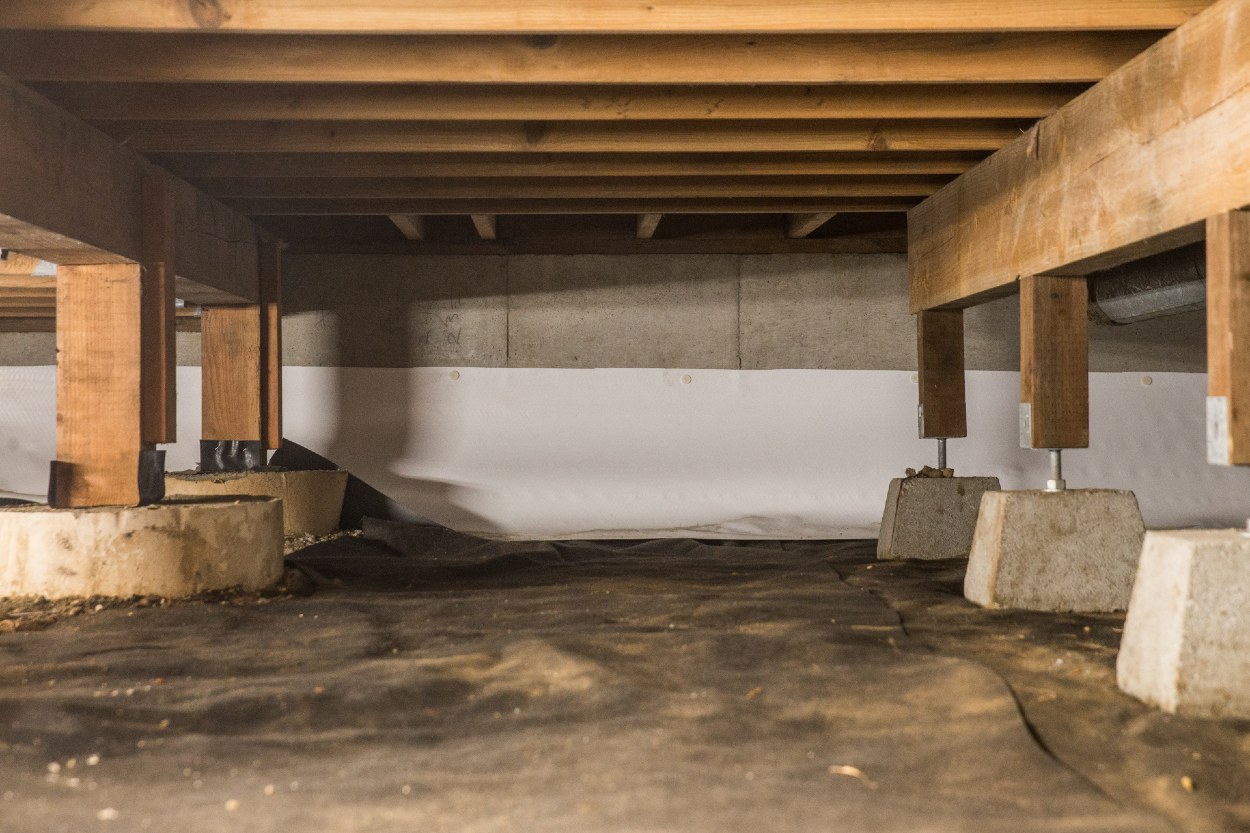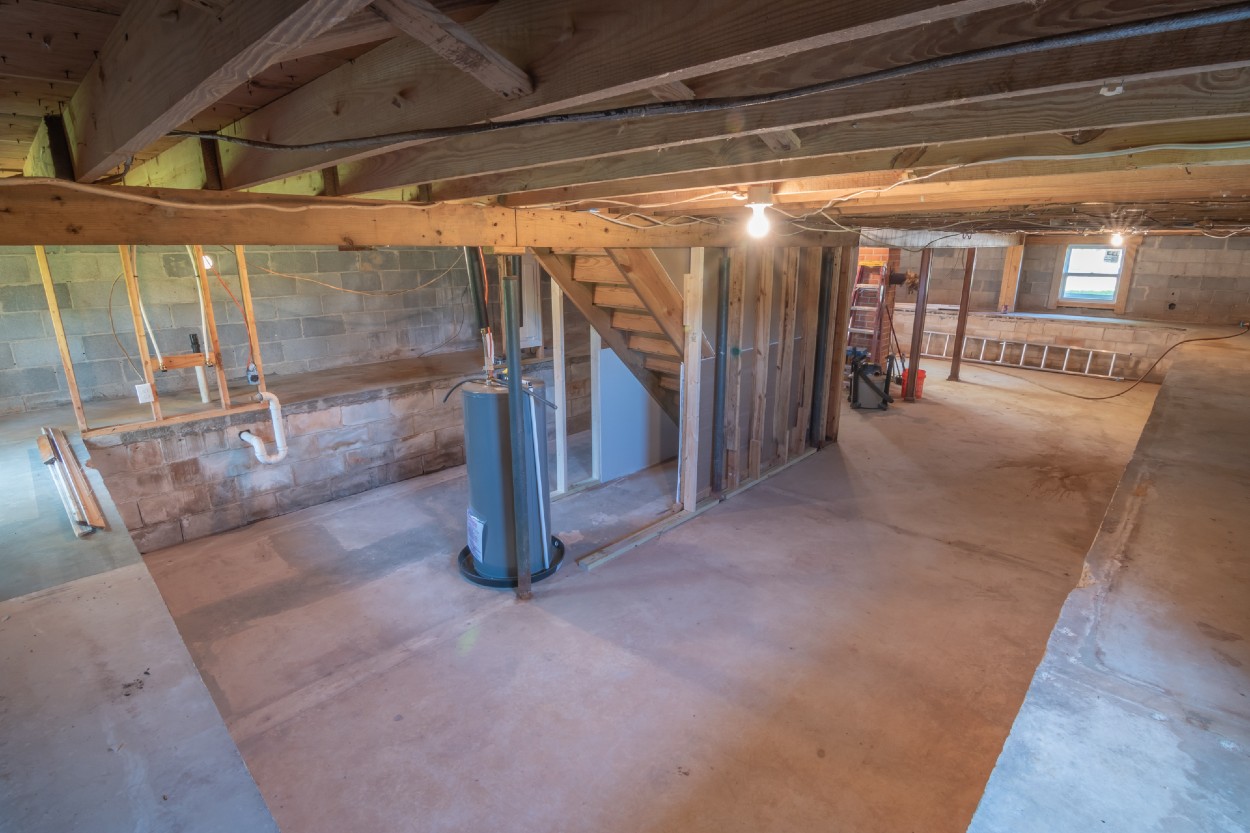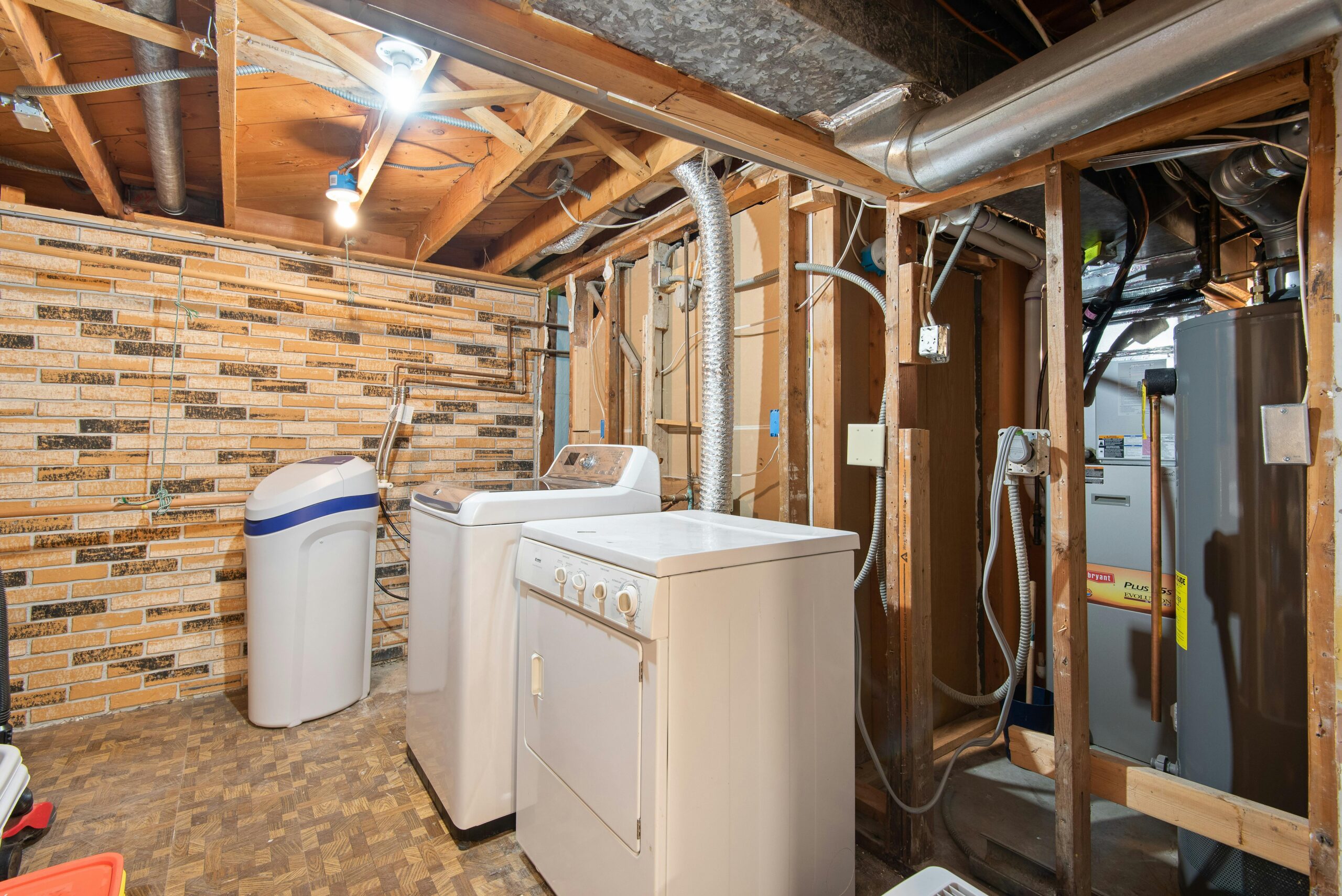Most homeowners know they have some sort of space under their house … but is it a crawl space or a basement? A crawl space and a basement are not the same – in fact, there are many differences between the two. The confusion between the two open spaces under a home is common, especially for unfinished basements, or half crawl space/half basement spaces.
Knowing the difference between crawl spaces vs. basements and the purpose of a house’s structure can benefit new and long-standing homeowners. One primary difference that every homeowner should know is that basements are livable spaces and crawl spaces are non-living spaces.
Although some crawl spaces are spacious enough to walk through, this area is not meant to be lived in. However, a crawl space can be used as a storage space for extra household items. Rather, crawl spaces are buffers between your home and the ground that are meant to protect your house’s structure from weather and moisture damage.
In this article, the Crawl Pros team will review the purpose of crawl spaces vs. basements, the importance of crawl space cleanouts, and even the possibility of converting a crawl space into a basement.
What is a Crawl Space?
A crawl space is a low-clearance area under a house’s floor, primarily responsible for keeping the house off the soil to control moisture levels within. As an unheated space in your home, crawl spaces typically rely on natural, non-mechanical methods of circulating airflow, such as crawl space vents, to prevent the buildup of excess moisture.
Especially in wetter climates like Seattle, Portland, and Idaho, a properly ventilated crawl space is critical to regulating the moisture levels in your home. Too much moisture in your crawl space — and, in turn, the growth of mold and mildew — risks not only the structural integrity of the house but also the health and wellness of its occupants. Crawl spaces may also prevent immediate damage to your home during an excess of rainwater and flooding.
Crawl spaces can also be used to hide basic utilities of a house including heating ducts, electrical lines, water pipes, and other ductwork which is another commonality between a crawl space and a basement. Crawl spaces, however, are cheaper to build than basements (saving you between $5,000–10,000), though they take approximately the same amount of time to construct.
What is a Basement?
Basements are livable, underground spaces – either partially or entirely underground – with concrete foundations and higher clearances.
They share some similarities to crawl spaces, namely in that they’re spaces to hide the guts of a home. Originally built for temperature-controlled storage in the form of root cellars, basements became the modern space with which we are now familiar in the 1950s as industrialization took hold.
Having a basement can add square footage and living space to your home once the basement is finished. This makes developing a basement more expensive, as it is a larger space that requires concrete walls and floors, rather than the dirt and soil comprising the floor of a crawl space. The majority of a basement is underground, though some homes built into hills have daylight basements, meaning half of the basement is exposed.
So, What Is the Difference Between Crawl Spaces vs. Basements?
As we mentioned before, the primary difference between crawl spaces and basements is livability. Basements are conditioned spaces meaning they are cooled, heated, or indirectly conditioned spaces while crawl spaces are considered unconditioned spaces.
Basements are part of the livable, heated portion of the house, and — just like your living room and bedrooms — you’ll want to keep the temperature regulated for the comfort of those inside it; you can do so by properly insulating the space, and effectively sealing it off from the outside. Because they’re unventilated underground structures, however, it can be incredibly difficult to keep basements dry.
Crawl spaces are part of the non-livable, unheated portion of the house, requiring both insulation and ventilation to control the moisture levels of the space. Another major difference between crawl spaces and basements is the clearance. Crawl spaces are 6 feet tall at the very most, while basements start at 8 feet. With crawl spaces ranging from 18 in–6 ft (the majority being around 3 feet tall) and basements ranging from 8–10 ft, this is perhaps the most apparent difference between the two spaces.
Unfinished basements are not classified as crawl spaces, though they may appear to bear some similarities. Basements can provide living space, once finished, while even the deepest crawl spaces are not equipped to be lived in. Because of this, both finished and unfinished basements are often used to house heaters/furnaces, water heaters, laundry rooms, and storage.
Crawl Space vs. Basement – What Do Most Homes in the Pacific Northwest Have?
While many older homes in the PNW have both a basement and a crawl space, newer builds are more often opting for only crawl spaces because basements are difficult to keep dry, especially in wet climates. However, some modern homes in the PNW do still build basements to gain square footage. Daylight basements have also become popular — the front access has windows, while the back access is crawl space.
Slab foundation is the third common type of foundation that homes are built on. Slab foundations do not have open spaces under the house. Slab foundation are level, at least six inches thick slabs that require a flat ground to be made. They are often not suited for wetter climates. Slab foundations have gained popularity over the years due to the cost being cheaper and easier to create. They also require less maintenance than a crawl space or basement.
Can a Crawl Space Be Turned Into a Basement?
Perhaps you’d like more room for storage, entertaining, or even a couple of new bedrooms … but you only have a crawl space. Can your crawl space be converted into a basement? Short answer? Yes, but it’s gonna cost you.
Converting a crawl space into a basement is expensive and no easy feat, but it is an alternative to building an above-ground addition to the home. Building out a basement requires extensive planning and time, but the basic construction steps are as follows:
- Jack up the house and support by steel beams.
- Dig out dirt to the proper depth for the basement.
- Pour concrete for the subfloor and foundation walls.
- Set the house back on top, now with additional square footage and value added to the property.
Crawl space conversion is a technique that has been in use for over 60 years, with conversions becoming safer and easier. However, this is not a DIY project. It will require the work of a knowledgeable and experienced contractor and engineer. Because it is a costly and time-consuming project, it’s important to consider your reasoning behind it and to eliminate alternative solutions. It is also important to consider your geographic location. If you’re in the Pacific Northwest, you may want to consider the pros and cons such as extensive waterproofing that will be necessary to keep your basement dry and usable.
Call Crawl Pros for Crawl Space Inspections
When it comes to crawl space ventilation, crawl space insulation, crawl space encapsulation, and everything in between, Crawl Pros is your go-to service provider. With locations across the Pacific Northwest, Crawl Pros is the regional expert in crawl space and attic services.
We’re confident in our ability to help each and every customer we service. We offer a “Perfect Lifetime Guarantee” with each of our services, including water remediation and mold remediation services if moisture buildup has already occurred.
Contact Crawl Pros for professional crawl space services today. Request a free estimate for any one of our crawl space services or give us a call to learn more.





